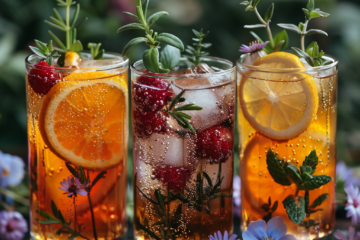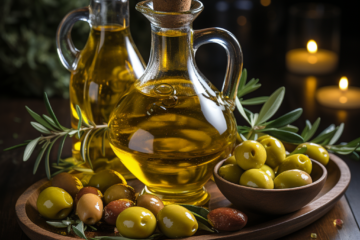In a world where food is an integral part of our daily lives, it’s easy to take what we eat for granted. We often assume that we know everything about the food we consume, but the truth is, that there are countless surprising and even shocking facts about the food we eat. In this article, we will delve into some of these food facts that will undoubtedly leave you astonished. From hidden ingredients to mind-blowing statistics, be prepared to see your favourite dishes in a whole new light.
The Secret Ingredient: Castoreum
Have you ever heard of castoreum? Probably not, but you might have unknowingly consumed it. Castoreum is a natural flavor enhancer that comes from the castor sacs of beavers, located near their rear end. Yes, you read that correctly—beaver glands. It’s used to add a vanilla-like flavor to various foods and beverages, including ice cream and perfumes. While it’s FDA-approved, the idea of beaver secretions in your food is quite shocking.
The Sneaky Cochineal Insects
When you see “carmine” or “cochineal extract” on an ingredient list, you might be surprised to learn that it’s derived from crushed female cochineal insects. These insects are used to create a vibrant red dye often found in candies, juices, and even cosmetics. While it’s perfectly safe to consume, the fact that you’re essentially eating bugs might leave you bewildered.
A Sea of Plastic in Your Seafood
Do you enjoy seafood? Then you should know that your favourite fish might come with a side of micro plastics. Studies have found that micro plastics have infiltrated our oceans, and marine life, including the fish we eat, ingest these tiny plastic particles. So, every time you indulge in seafood, you could also be consuming micro plastics—a shocking connection between your dinner plate and plastic pollution.
The Sweet Source of Honey
Honey is a beloved natural sweetener, but its origin might surprise you. Honey is produced by bees, which collect nectar from flowers and then regurgitate and store it in their hives. The process involves enzymes, evaporation, and time, resulting in the golden liquid we know as honey. It’s a natural wonder, but the idea of bees regurgitating your sweetener is quite shocking when you think about it.
The Alarming Sodium Content in Fast Food
Fast food is notorious for being high in salt, but the actual sodium content might leave you flabbergasted. Some fast food items contain more salt than an entire day’s recommended intake. Consuming such foods regularly can have serious health implications, making it essential to be aware of the shockingly high sodium levels lurking in your favourite fast-food meals.

The Disturbing Truth About Shrimp Farming
Shrimp is a popular seafood choice, but the shrimp farming industry has a dirty secret. To combat disease in crowded shrimp farms, antibiotics are widely used. The shocking part is that some shrimp can contain traces of these antibiotics when they reach your plate. This practice raises concerns about antibiotic resistance and the overall health impact of consuming antibiotic-laden shrimp.
The Misleading Term “Natural Flavors”
When you see “natural flavors” listed on a food product, it’s easy to assume that it’s derived from wholesome, natural sources. However, the reality is far from it. The term “natural flavors” can encompass a wide range of substances, including chemicals extracted from natural sources. It doesn’t necessarily mean the flavor is straight from nature, leaving consumers puzzled about what they’re really consuming.
The Extra Ingredients in Your Orange Juice
If you prefer your orange juice with pulp, you might be surprised to learn that some brands add extra ingredients to create that “freshly squeezed” feel. These ingredients can include oils and essences that enhance the flavor and aroma but aren’t naturally present in freshly squeezed juice. It’s a clever marketing strategy, but it can be a shocking revelation for juice enthusiasts.

The Intriguing Mystery of Fortune Cookies
Fortune cookies are a staple in many Asian restaurants, but their origins are surprisingly not Chinese. They were first introduced in the United States by Japanese immigrants. Despite their American origins, these cookies have become synonymous with Chinese cuisine. The unexpected history behind fortune cookies can certainly leave you scratching your head.
The Controversial History of Ketchup
Ketchup, the beloved condiment, didn’t always contain tomatoes. In its early days, ketchup was made from fermented fish brine. It evolved over time, incorporating various ingredients like mushrooms, walnuts, and anchovies. It wasn’t until the late 19th century that tomatoes became a key component of ketchup as we know it today.
The Scary Reality of Food Waste
Food waste is a global issue, and the statistics are staggering. It’s estimated that nearly one-third of all food produced worldwide goes to waste. This wastefulness not only impacts the environment but also leaves many people hungry. The shocking scale of food waste is a stark reminder of the need for sustainable food practices.
The Incredible Edible Gold
Edible gold, made from real gold leaf, is a luxury ingredient used to decorate and enhance various dishes and beverages. From gold-flaked ice cream to gold-topped sushi, this extravagant addition can turn an ordinary meal into a lavish experience. While it may seem excessive, the allure of edible gold continues to captivate the culinary world.
The Astonishing Variety of Apples
When it comes to apples, you might think of the classic red or green varieties. However, there are over 7,000 apple cultivars worldwide, each with its unique flavor profile. From the sweet Honeycrisp to the tart Granny Smith, the diversity of apple varieties is truly astonishing and can offer a surprising range of tastes to explore.



